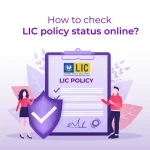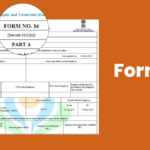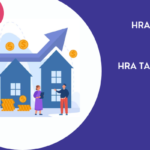In our dynamic lives, needing time off from school, college, or work is inevitable. Whether it’s for personal reasons, health issues, or urgent family matters, a well-structured leave application is crucial for formal documentation and acceptance of your absence. This guide provides a comprehensive overview of crafting effective leave applications for different contexts, ensuring clarity and expectation adherence.
Understanding Leave Applications
Definition
A leave application is a formal request written to an authority, such as a principal, manager, or supervisor, seeking permission for absence from work or academic duties for a specified period. It includes the reason for leave, duration, and contact details for communication during the absence.
Importance of Leave Applications
Leave applications are essential for:
– Documentation: Providing a formal record for HR or school administration.
– Planning: Facilitating the organization of work or academic schedules during the applicant’s absence.
– Approval: Ensuring leave is granted according to policies and regulations.
Types of Leave Applications
Sick Leave
Description: Granted for illness or medical conditions.
Usage: Usually a few days, extendable based on severity.
Casual Leave
Description: Short-term leave for personal reasons or emergencies.
Usage: Often a few days per month.
Maternity Leave
Description: For women during and after childbirth.
Usage: Up to 26 weeks as per Indian law.
Paternity Leave
Description: For fathers post-childbirth.
Usage: Typically 5-15 days, depending on policy.
Annual Leave
Description: Paid leave for vacation or personal reasons.
Usage: Generally 15-20 days per year.
Bereavement Leave
Description: Time off to mourn a family member’s death.
Usage: Usually up to 7 days, depending on policy.
Vacation Leave
Description: Planned leave for travel or relaxation.
Usage: Based on available leave balance.
Half-Day Leave
Description: Leave for half a working day for appointments or personal tasks.
Usage: For short-term needs without taking a full day off.
One-Day Leave
Description: Single day off for urgent personal matters.
Usage: Suitable for short, non-recurring needs.
Essential Components of a Leave Application
- Salutation: Respectfully address the concerned authority.
- Subject Line: Summarize the purpose of the application.
- Main Body: State the reason for leave, duration, and additional details.
- Contact Information: Provide ways to reach you during your leave.
- Signature: Include your name, designation/class, and date.
Writing Effective Leave Applications
General Format
[Recipient’s Name]
[Designation]
[Organization/School Name]
[Date]
Subject: Leave Application
Dear [Recipient’s Name],
[State the reason for your leave and duration.]
Thank you.
Yours sincerely,
[Your Signature]
[Your Name]
[Designation/Class]
[Organization/School Name]
School Leave Applications
[Principal’s Name]
[School Name]
[School Address]
[City, State, ZIP Code]
[Date]
Subject: Leave Application
Respected Principal,
I am [Your Name], a student of [Your Grade/Class] at [School Name]. I request leave from [Start Date] to [End Date] due to [reason for leave]. Kindly grant me leave for the mentioned period.
Thank you.
Yours sincerely,
[Your Name]
[Your Class/Grade]
[Roll Number]
College Leave Applications
[College Name]
[College Address]
[City, State, ZIP Code]
[Date]
Subject: Leave Application
Respected Principal,
I am [Your Name], a student of [Your Course/Program] at [College Name]. I request leave from [Start Date] to [End Date] due to [reason for leave]. Kindly approve my application.
Thank you.
Yours sincerely,
[Your Name]
[Your Course/Program]
[Your Roll Number]
[Contact Number]
[Your Email Address]
Office Leave Applications
[Employer’s Name]
[Company Name]
[Company Address]
[City, State, ZIP Code]
[Date]
Subject: Leave Application for [Specify Dates]
Dear [Manager’s Name],
I am writing to request leave from [Start Date] to [End Date] due to [reason for leave]. [Colleague’s Name] will handle my tasks during my absence.
Thank you.
Yours sincerely,
[Your Full Name]
[Your Designation]
[Contact Number]
[Email Address]
[Your Signature]
Leave Application via Email
In today’s digital world, emailing your leave application is common practice. Ensure your email is concise, respectful, and follows a similar structure to traditional letters.
Email Format
Subject Line: Leave Application for [Reason] from [Start Date] to [End Date]
Body:
Dear [Recipient’s Name],
I am writing to request leave from [Start Date] to [End Date] due to [Reason]. During my absence, [Colleague’s Name] will handle my responsibilities. Please confirm your approval.
Thank you.
Best regards,
[Your Name]
[Your Designation]
[Your Contact Information]
Common Reasons for Applying for Leave
– Medical Issues: Illness, injury, or medical appointments.
– Family Matters: Emergencies, care responsibilities, or bereavement.
– Personal Reasons: Mental health days, urgent errands, or vacation.
– Official Reasons: Attending conferences, seminars, or training.
Tips for Crafting the Perfect Leave Application
- Be Concise: Keep your request clear and to the point.
- Provide Details: Specify the reason for your leave.
- Use Formal Language: Maintain a professional tone.
- Plan Ahead: If possible, submit your application well in advance.
- Offer Contact Information: Include ways to reach you if needed.
Conclusion
Writing a leave application might seem straightforward, but a well-crafted request can significantly affect acceptance. Whether you need time off for health, personal, or family reasons, following the guidelines and formats provided in this guide will help you communicate your needs effectively. Always be respectful, provide necessary details, and follow up if required.
FAQs
Q: What is Casual Leave?
A: Casual leave is a type of short-term leave granted for personal reasons or emergencies. It typically allows employees to take a few days off per month without prior notice.
Q: Is Casual Leave Paid?
A: Yes, casual leave is usually paid, allowing employees to maintain their salary while attending to personal matters or emergencies.
Q: What is the Difference Between Bereavement Leave and Sick Day?
A: Bereavement leave is specifically for mourning the loss of a loved one, whereas a sick day is taken for personal illness or medical appointments.
Q: Is a Bereavement Leave Mandatory?
A: Bereavement leave is often provided by organizations but is not universally mandated by law. The policy can vary based on the company or country’s labor regulations.
Q: How to Write an Application for a Leave of Absence?
A: A leave of absence application should outline the reason for the extended leave, the duration, and any arrangements for covering your duties. It’s important to discuss this with your manager or school administration before submitting the application.











